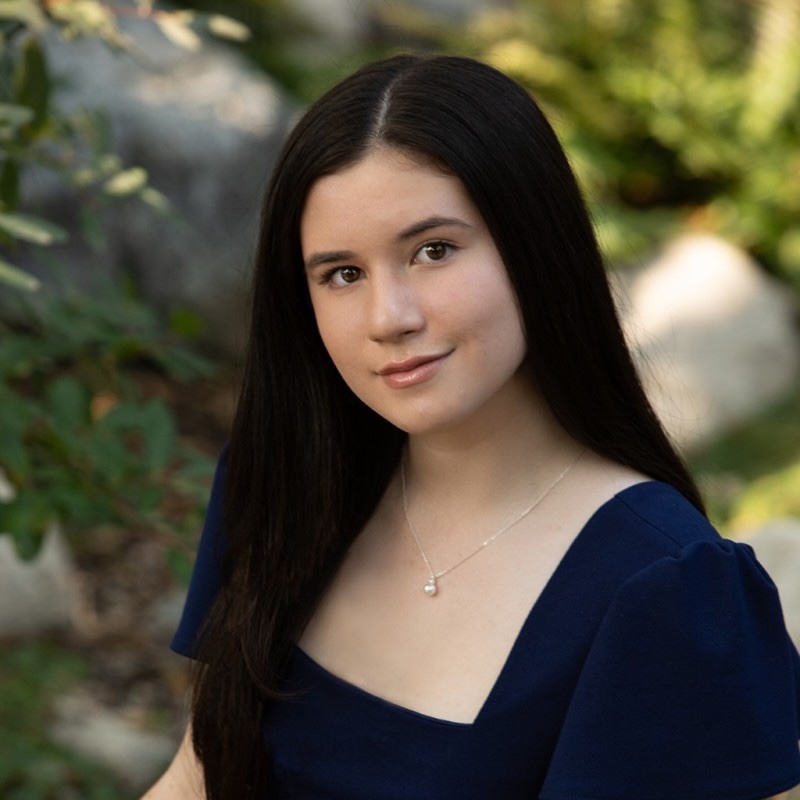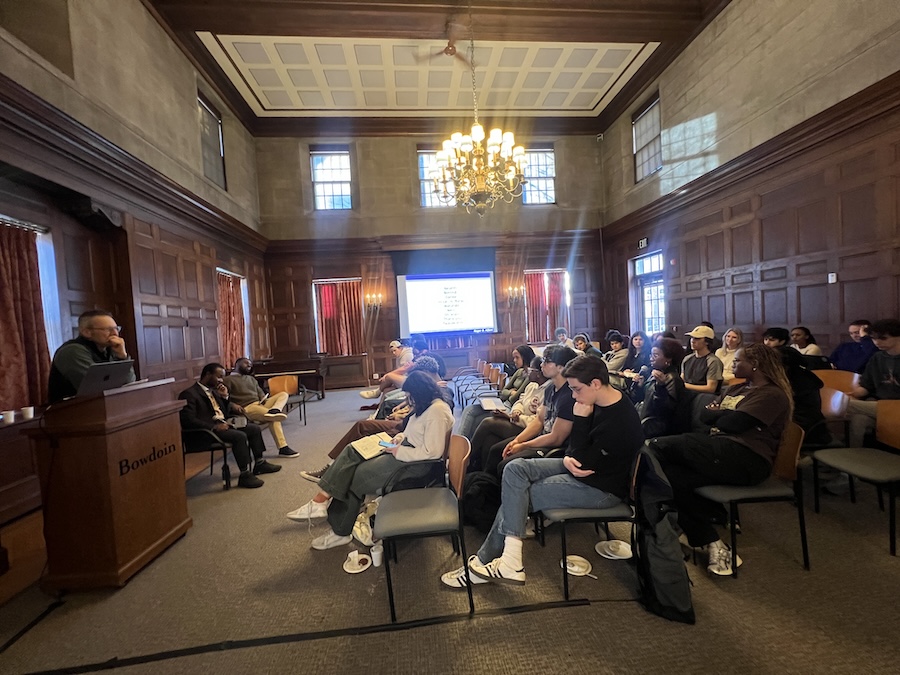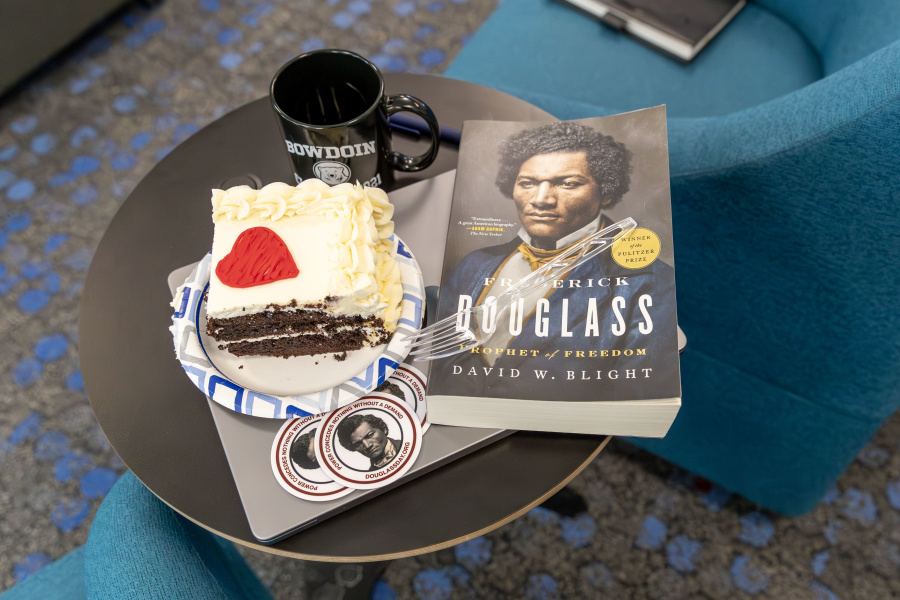Faculty Collaborate on Asian-American Themed Art Exhibition
By Tom Porter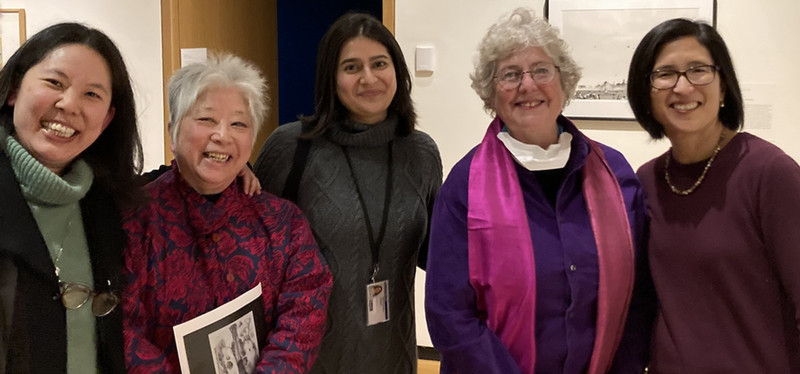
The English and Asian studies professor was viewing the work of Taiwanese American artist Stephanie Shih, known for making sculptures that resemble food and pantry items often found in Asian American kitchens—items that remind Shih of her New Jersey childhood.
On show are a red snapper, some bok choy, a bottle of vinegar, and a can of preserved beans—“beautifully crafted and very detailed items,” yet ordinary ones that anyone with a Chinese (or Taiwanese) American background would recognize, said Kong, who grew up in Hong Kong before moving to the US as a child. “Precisely because of their ordinariness they constitute and invoke the meaning of everyday life in the diasporic Chinese household,” she added.
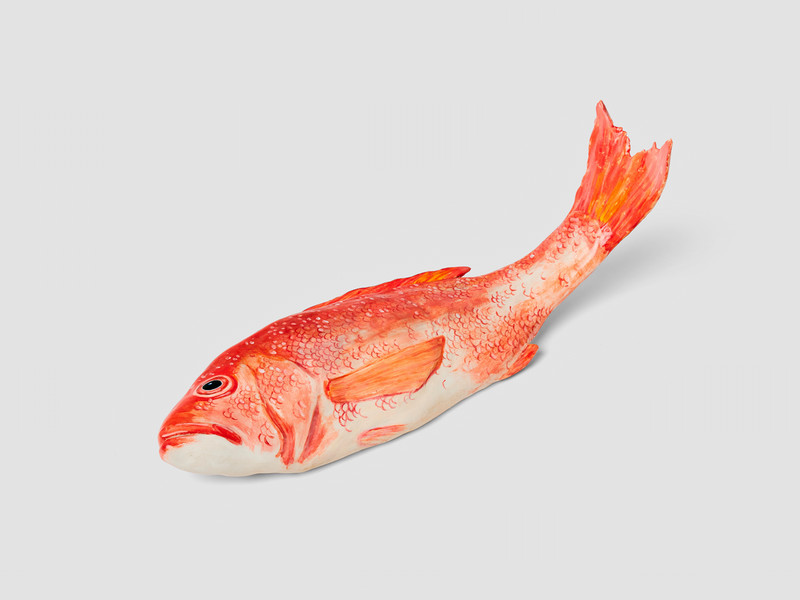
Stephanie H. Shih, Red Snapper, 2023, painted ceramic. Bowdoin College Museum of Art, Brunswick, Maine. Courtesy of the artist and Berggruen Gallery, San Francisco. Photo: Robert Bredvad.
Kong spoke on a recent walking tour of the museum accompanied by four faculty colleagues, all of whom collaborated to help curate an exhibition currently running in three of the venue’s galleries. Without Apology explores how Asian American identity has expressed itself over the past eight decades or so, showcasing thirty works of art from the 1940s to the present day, featuring more than twenty artists who identify as Asian American.
The exhibition is divided into three sections: “Memories,” which explores the historical currents that continue to resonate through Asian American experiences today; “Regenerations,” which underscores the many ways Asian American artists have sought to reconstruct the past and forge new narratives in the present and for the future; and “Selves,” an insight into how Asian Americans assert their identities in bold, playful, and often unexpected ways.
“We come from different disciplines, but we all have a deep interest in the Asian American experience,” said A. Myrick Freeman Professor of Social Sciences Nancy Riley, one of the five faculty curators. The others are the aforementioned Belinda Kong, Professor of History and Environmental Studies Connie Chiang, Assistant Professor of Sociology Shruti Devgan, and Bowdoin Professor of Asian Studies and Cinema Studies Shu-chin Tsui. They were helped by the museum’s curatorial assistant, Sabrina Lin, who also manages student programs, and lead curator Casey Braun. “Without Apology transcends traditional narratives,” said Braun, “allowing us to explore the complex layers of Asian American identity, which both exist on their own and are inextricably bound together with American identity as a whole.”
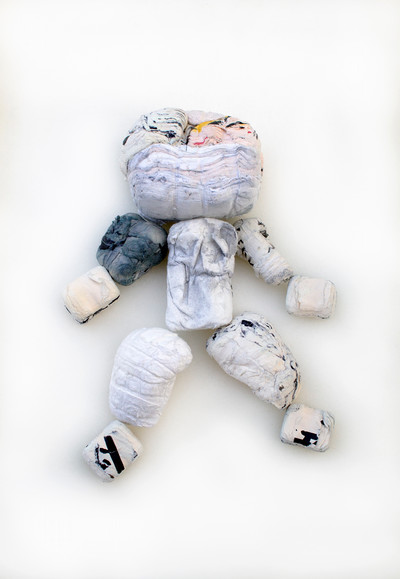
Tuan Nguyen, Washed Child, 2018, ink and pencil on laundered paper. Courtesy of the artist.
Among the works of art chosen by Riley was a sculpture by Vietnamese-born Tuan Nguyen, who came to the US as a child and a refugee. The piece is called Washed Child and is made from paper.
“This is particularly interesting,” she said, “because it’s made with discarded paper he’d previously used for drawings. He washed the paper and repurposed it into this new sculpture, which is shaped like a child, which I think really connects to this notion of transformation that’s familiar to so many refugees and immigrants,” Riley observed. “It reflects the ways they have to move between two cultures and essentially reinvent themselves, often under great duress, having experienced terrible trauma in their homeland.”
Connie Chiang’s scholarship includes extensive research into the Japanese American experience during World War II. She chose to highlight the work of Chiura Obata, who emigrated from Japan in the early twentieth century.
“He was known originally as a landscape painter, but after war broke out, he was held in an incarceration camp, along with more than 125,000 other Japanese Americans.” During his confinement at a camp in Utah, Obata was permitted to continue drawing and painting, making over a hundred line drawings depicting camp life. Some of these are on loan for this exhibition, along with a selection of his watercolors.
“Obata found beauty in these desolate landscapes, while also highlighting the injustices that many Japanese Americans experienced during the war.”
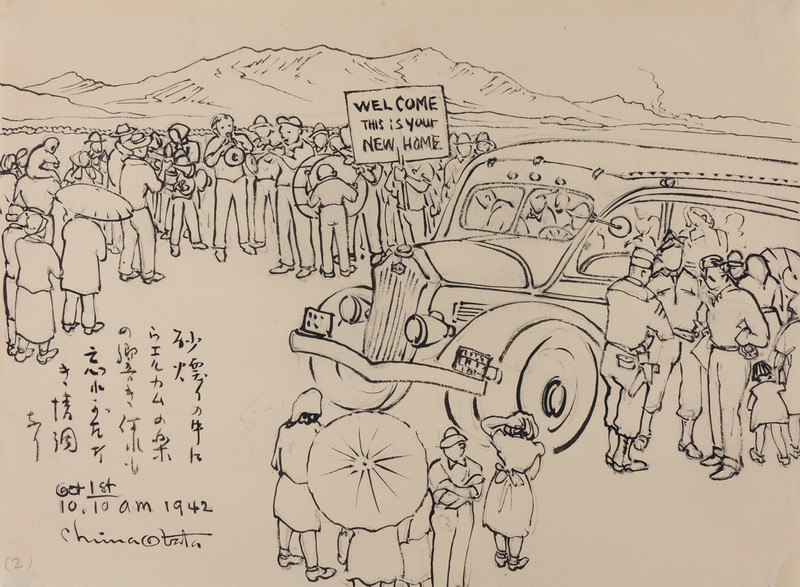
Chiura Obata, Arrivals welcomed at Topaz, Oct 1st, 10:10 a.m., 1942, 1942, ink, paper, graphite. Gift of the Estate of Chiura Obata, University of Utah Museum of Fine Art. © Estate of Chiura Obata. York.
“As a first-generation South Asian immigrant myself, I was happy to discover this piece was owned by the museum,” observed Shruti Devgan. The sociology professor was referring to Ready to Leave, Series II, a painting by Pakistani American artist Shahzia Sikander.
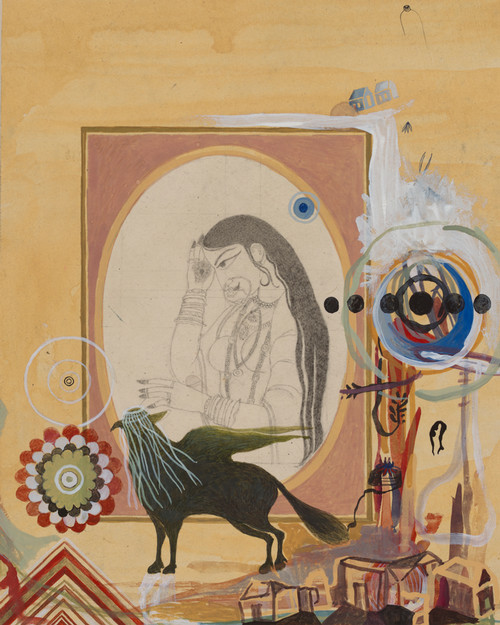
Shahzia Sikander, Ready to Leave, Series II, 1997, vegetable color on wasil. Bowdoin College Museum of Art, Brunswick, Maine. © Shahzia Sikander, Courtesy of the artist, Pilar Corrias, London and Sean Kelly, New York.
It depicts a woman of South Asian/American Muslim appearance in profile; looking at the woman is a mythical creature, an eagle-lion hybrid known as a griffin. “Sikander said she made this piece in response to the ‘straightjacketing’ she experienced when coming to the US, becoming the outsider through what she calls ‘the polarizing paradigm of ‘East /West.’” Devgan relates to this piece, she said, because she “grapples with questions of home and belonging all the time.”
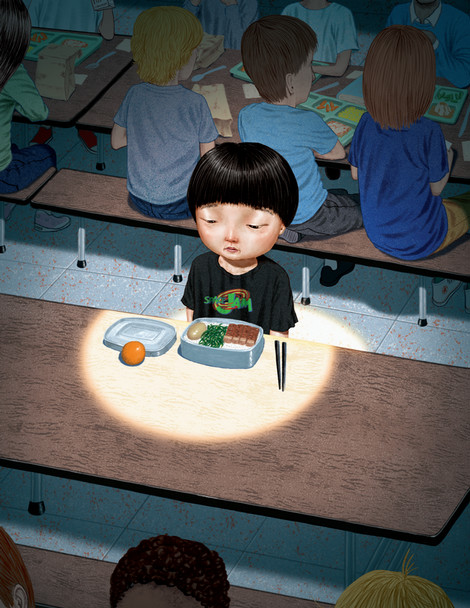
Jason Raish, Asian American Identity, 2017 (printed 2023), inkjet print from digital illustration, published in Banana Magazine, Issue 003. Courtesy of the artist.
Shu-chin Tsui is a scholar of film and Asian studies who explores, among other things, how Hollywood has treated Asia and Asians. One of her selected works was a digital illustration called Asian American Identity.
Created by Korean-born artist Jason Raish, the piece shows a sad-looking boy of Asian appearance sitting alone in a school lunchroom, his chopsticks next to his lunchbox, which contains seaweed and other Asian-looking food.
“Our attention is drawn immediately to this cute little boy, sitting under a spotlight, isolated from the other children, who appear to be white.” Tsui found this picture particularly moving because of the way it highlights themes of isolation and exclusion, reflecting the anxiety that comes from that. “That reminds us how racial segregation can start at an early age, a point which really struck home with me.”
“This exhibition demonstrates how artists tackled both personal and political themes of identity for more than a century, and collectively helps to give voice to these complex issues,” commented museum codirector Anne Goodyear.
The show, she added, also acknowledges the growth in anti-Asian discrimination and violence since the start of the COVID-19 pandemic in 2020. “This exhibition demonstrates how artists tackled both personal and political themes of identity for more than a century, and collectively helps to give voice to these complex issues.”
Without Apology runs until June 2, 2024, in the Center Gallery, Media Gallery, and Focus Gallery of the Bowdoin College Museum of Art. It is part of a larger, college-wide yearlong initiative called Asian American Reckonings, which includes courses, speakers, and a variety of events connected to the Asian American experience.
